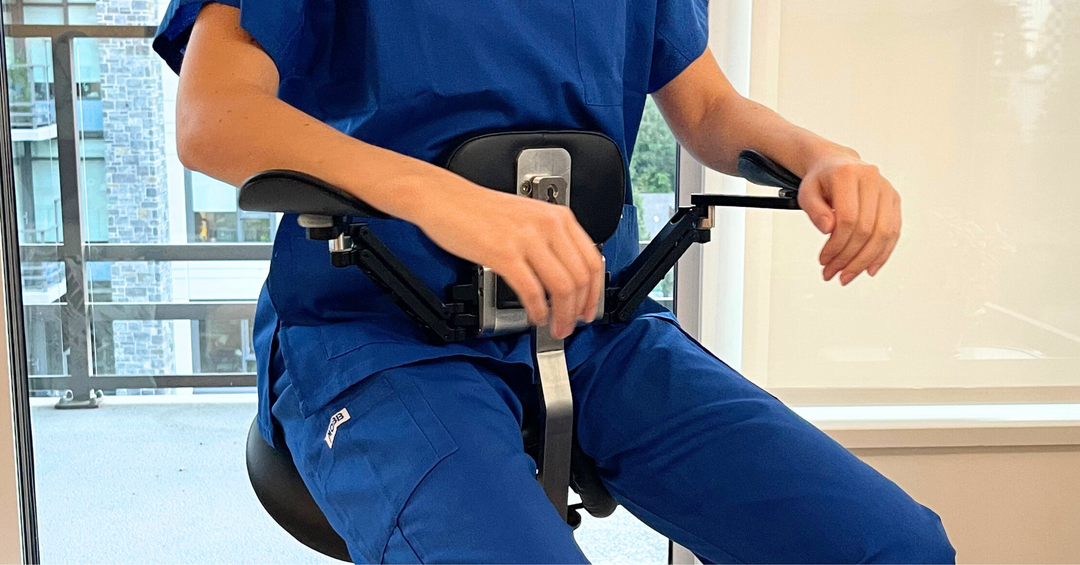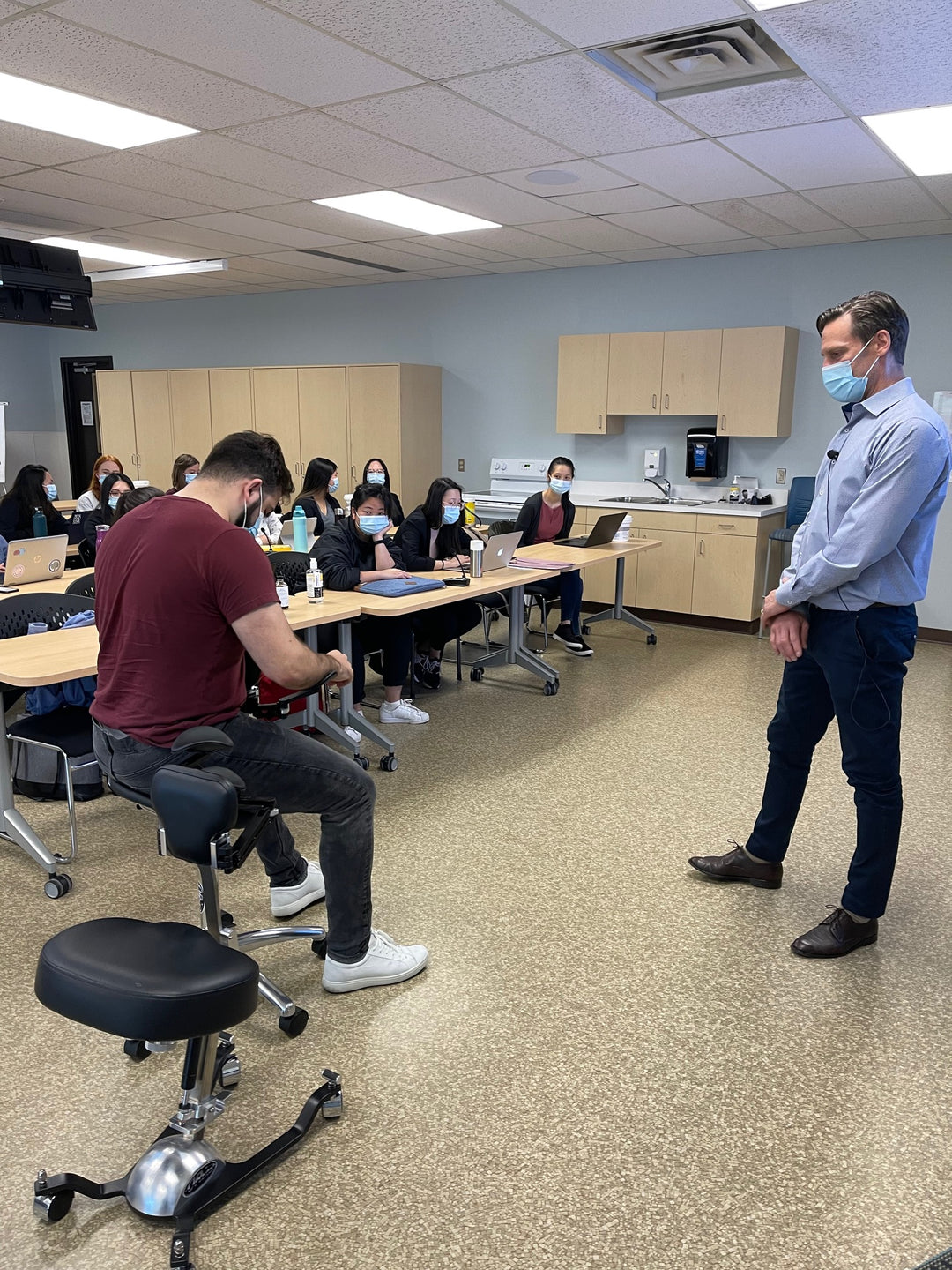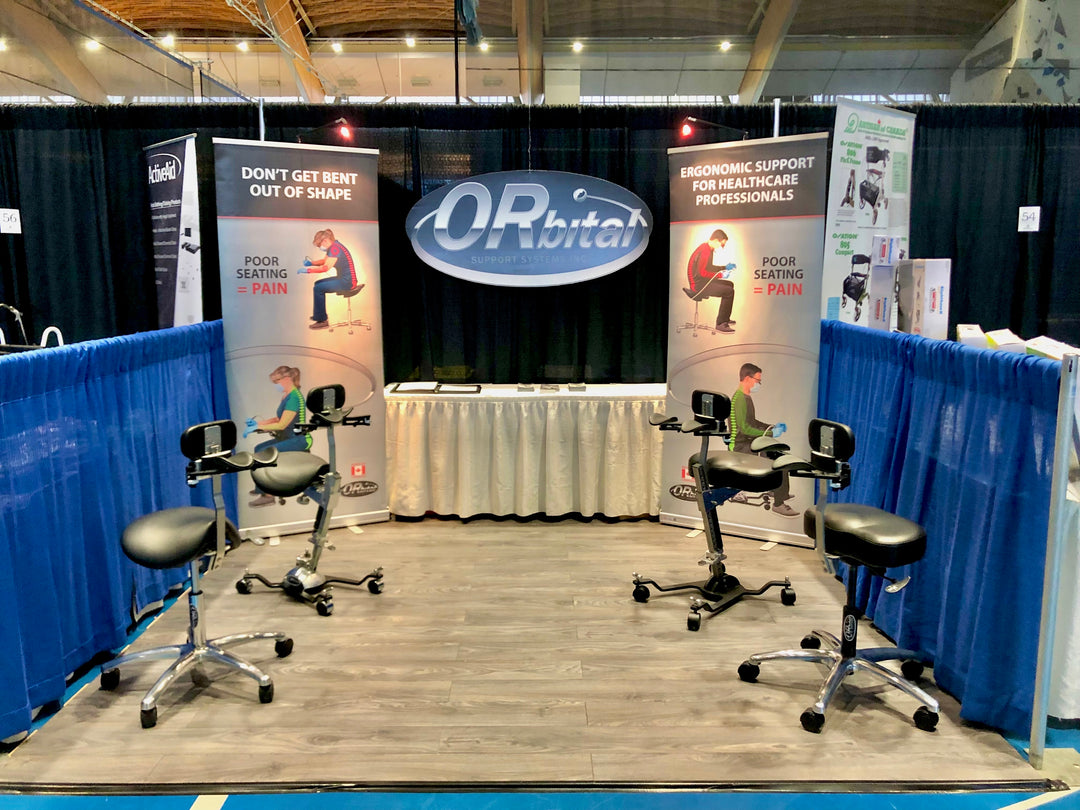Back Pain Prevalence and Intensity Among Dentists

A summary of an interesting new European study on back pain prevalence and intensity among dentists:
Back pain prevalence, intensity and associated factors in French dentists: a national study among 1004 professionals.
(European Spine Journal (November 2019, Volume 28, Issue 11) https://www.europeanspinejournal.org/article/101007s00586-019-06080-4
A new study in the European Spine Journal revealed that 77.9% of dentists suffered chronic back pain (81.83% women and 71.47% men). Age and years of practice were also associated with more intense pain. Interestingly, dentists who alternate between sitting and standing reported more frequent and more intense pain in the upper and lower back than those in a fixed position. Preventive measures such as ergonomics exist and awareness should be raised among dentists and dental students.
Chronic pain is defined by the World Health Organization as a pain lasting or recurring for at least 3 months. Past studies have reported a high prevalence of dentists suffering from chronic back pain, from 60% to more than 90%, making it a significant burden for the profession. There are many contributing factors such as repetitive motions, static and straining working positions with unsupported forearms, use of vibrating tools, as well as an important psychological stress. Dentists are also subject to many awkward postures including neck flexion, trunk inclination and rotation, shoulders lifting, curving of the vertebral column, and incorrect positioning of the lower limbs – all of which create a particularly high risk of musculoskeletal disease, specifically neck and lower back pain.
The Orbital Chair offers full body support and also helps the dentist maintain correct ergonomic positioning. The chest support offers bio-feedback to ensure that proper posture is maintained avoiding trunk inclination and rotation as well as avoiding curving of the vertebral column. Arm rests support the forearms and take the strain off of the shoulders, neck and upper back. They also help to maintain correct focal distance while using loupes, further reducing neck strain. Find the right Orbital Chair for you.
The study also found that the prevalence of back pain increases quickly after only 3 years of practice, and that the intensity continues to increase over the years. Preventative actions should be taken as soon as possible. Ergonomics is already included in dental students’ teachings, but may be overlooked by the students who do not feel neck or back pain yet. Precocious awareness about potential future back pains is the cornerstone for future good habits and should be raised.







